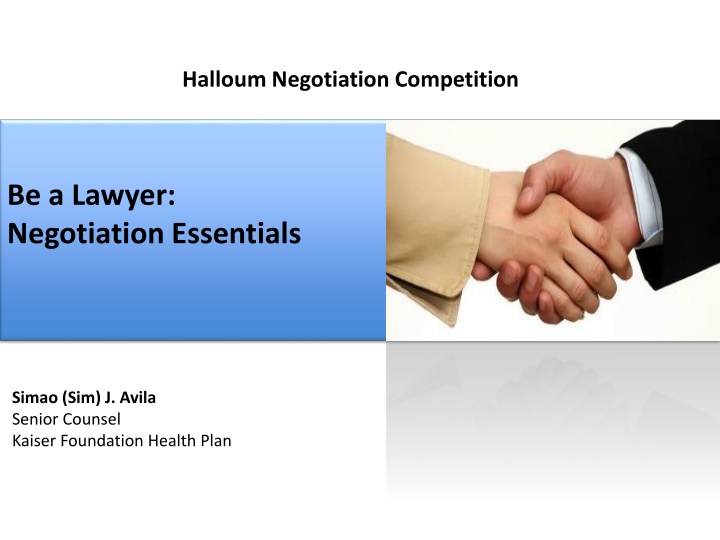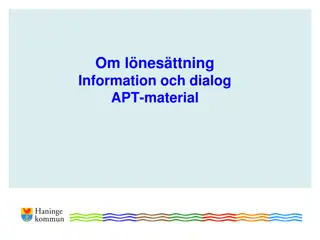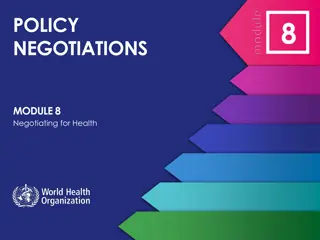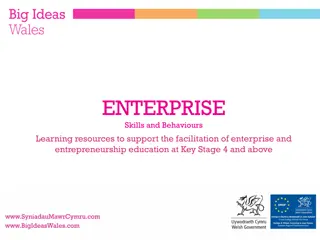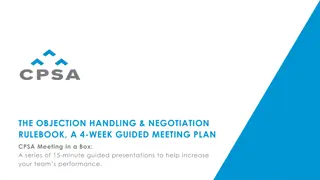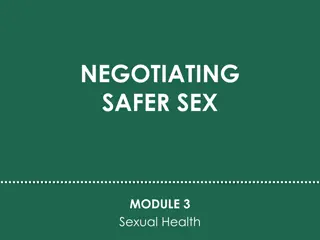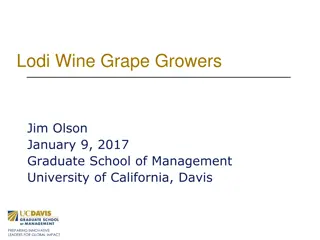Mastering Negotiation Skills: Key Concepts and Strategies
Explore the essentials of negotiation theory, conflict management styles, and collaborative versus adversarial approaches in this comprehensive guide. Learn about different bargaining strategies and conflict resolution techniques to enhance your negotiation skills and achieve successful outcomes in a variety of scenarios.
Download Presentation

Please find below an Image/Link to download the presentation.
The content on the website is provided AS IS for your information and personal use only. It may not be sold, licensed, or shared on other websites without obtaining consent from the author.If you encounter any issues during the download, it is possible that the publisher has removed the file from their server.
You are allowed to download the files provided on this website for personal or commercial use, subject to the condition that they are used lawfully. All files are the property of their respective owners.
The content on the website is provided AS IS for your information and personal use only. It may not be sold, licensed, or shared on other websites without obtaining consent from the author.
E N D
Presentation Transcript
Halloum Negotiation Competition Be a Lawyer: Negotiation Essentials Simao (Sim) J. Avila Senior Counsel Kaiser Foundation Health Plan
Agenda Negotiation Theory Short Exercise Negotiation Process Questions?
Conflict Management Styles The Five Types (from Thomas Killman) Most concerned with satisfaction of own interests, often at expense of the other. Competition Sidesteps, does not engage in the conflict and therefore does not usually address own interests or those of the other. Avoidance Primary focus on satisfying interests of the other, often neglecting or sacrificing own concerns. Accommodation Seeks middle ground, mutually acceptable solution with partial satisfaction of own interests and partial satisfaction of other s interests. Compromise Aspires to find a maximally satisfactory solution, addressing all of own interests and those of the other. Collaboration
Conflict Management Styles The Five Types (from Thomas Killman) Competition Avoidance Learning About Our Tendencies in Conflict, While Understanding That We All Have and Use All of These Styles to Different Degrees in Different Moments Accommodation Compromise Collaboration
Collaborative vs. Adversarial Collaborative/Interest-Based Adversarial/Positional Focus on maximizing own gain Stay at position level View other as opponent Attack people rather than the problem Guard/Withhold information Discount relationship or willing to sacrifice it in competition Drive for desired outcome More likely to use negative leverage Focus on mutual gain Seek underlying needs Joint problem solvers Separate the people from the problem Share information Build relationship Invent multiple options Use objective criteria and principled approach
Collaborative vs. Adversarial Integrative Bargaining: Seek Interests Expand the Pie Create Value Look for joint gains Distributive Bargaining Establish Starting Positions Cut the Pie Make Gradual Concessions
Positions & Interests A Demand What Lies Beneath the Position The Human Need A Strategy to Get Needs Met The Driver or Motivator A Want
Psychological Emotional Concrete Substantive Procedural Examples: Examples: Examples: Participation Order Voice Fairness/Equality Due Process Respect Autonomy Enjoyment Love Understanding Food Shelter Clothing Health Growth/Challenge Categories of Interests/Needs
Why seek the underlying interests? Communication occurs at more meaningful, respectful and human level Promotes better understanding Improves negotiation atmosphere. Tends to decrease hostility and conflict Often discover more possible solutions or more different strategies to meet the underlying needs Solutions are more likely to solve the real problem and be more effective and durable But NOTE: Revealing interests too quickly and without adequate trust and reciprocity may be unwise as it can leave you vulnerable to exploitation.
Leverage in Negotiation Something you can offer that they want. Better yet something they need. Better yet, something they must have. Positive the carrot Negative the stick A course of action or consequence that will occur and/or which you can cause to occur, in the absence of a negotiated agreement, that is potentially detrimental to the other person . Normative Standards, objective criteria Established guidelines that are relevant in the context (e.g. law, industry norms, religious or family values, company policy). Guidelines are more persuasive to the extent that they are broadly accepted and viewed as relatively objective. Psychology: Human desire to appear consistent with norms. Note: Watch out for self-interested selection of objective criteria
Phases of a Negotiation Preparation Introduction & Entry: Setting the Stage Information Gathering & Exploration of Interests Option Generation of Possible Resolutions Option Analysis and Bargaining Agreement Finalization & Closure
Preparation Assess situation Situation Matrix Perceived Conflict Over Stakes in the Negotiation HIGH LOW Perceived importance of future relation-ship between the parties I. Balanced Concerns II. Relationships HIGH (Business partnerships, joint ventures) (Work team, friendship or family relationships) III. Transactions IV. Tacit Coordination (Market transactions, house sales, divorce) (Highway intersection exchange) LOW
Preparation Situational Matrix and Strategy Guide Perceived Conflict Over Stakes in the Negotiation HIGH LOW Perceived importance of future relation-ship between the parties I. (Business partnerships, joint ventures) Problem solving or compromise Balanced Concerns II. Relationships (Work team, friendship or family relationships) Accommodating, problem solving & accommodating HIGH III. Transactions (Market transactions, house sales, divorce) Competition, problem solving and compromise IV. Tacit Coordination (Highway intersection exchange) Avoidance, accommodation or compromise LOW
Preparation Identify the Context The Setting Assess the nature & importance of: Relationships Concrete Outcomes Reputation Hidden Decision-makers Outside Influences Ensure Appropriate: Time Location Privacy/Publicity Necessary People Included Necessary Information available Know Yourself Interests Try to Understand Them (High) Expectations Bottom Lines Potential Strategies Alternatives to Negotiation (Principled) Criteria Leverage Potential Solutions Identify your: Identify or Imagine their:
Introduction & Entry: Setting the Stage Set the Tone: Agree on Process: Rapport Building Positive start Clear/Respectful Introductions Ground Rules Time available Format for discussions Housekeeping (breaks etc.) Set Forth Purpose(s) of Meeting/Negotiation: Identify issues to discuss Establish agenda (order for discussion)
Information Gathering & Exploration General Goals: Build rapport Clarify interests Develop and share data needed for problem-solving Identify areas of agreement & disagreement Keep negotiation on track, focused on issues Set the stage for problem-solving Seek to Understand Them: Help Them to Understand You: LISTEN!! (ACTIVELY) Show them you are listening Probe for their interests Ask interested/curious questions Study their responses to initial ideas Assert your interests respectfully Explain your criteria & rationales Share persuasive data Use leverage with care
Option Generation of Possible Resolutions Brainstorming Method: Use board/flipchart All ideas recorded Ideas are not commitments No criticism No evaluation
Option Analysis and Bargaining Creative Options Can be: Generally Helpful Guidelines: Combined Modified Used in the alternative Tested Implemented in stages Tackle one issue at a time Stay task focused Remember interests Use objective criteria for evaluation Maintain respectful environment Patience, patience, patience Distributive Bargaining: Give principled rationale for positions Don t lose track of underlying interests Leave room for concessions Look for reciprocity Compare proposals to your alternatives Study ways to break impasse
Agreement Finalization & Closure Capture Agreements: Often in writing With clarity, specificity and detail (who, what, where, when, how) Clear responsibilities Potential incentives for compliance Anticipate potential contingencies setbacks Identify procedure for settling disputes (ADR) Provide for monitoring Possible confidentiality or publicity DON T Rush conclusion Leave without clarifying agreements Apply heavy pressure
Good Negotiations = Awareness of and ability to apply negotiation theory Development of an effective negotiation style Understanding of the negotiation process Improvement of critical communication skills
Where to Get More Information Richard Shell: Bargaining for Advantage Folberg &Golann: Lawyer Negotiation; Theory, Practice and Law. Fisher & Ury: Getting to Yes
